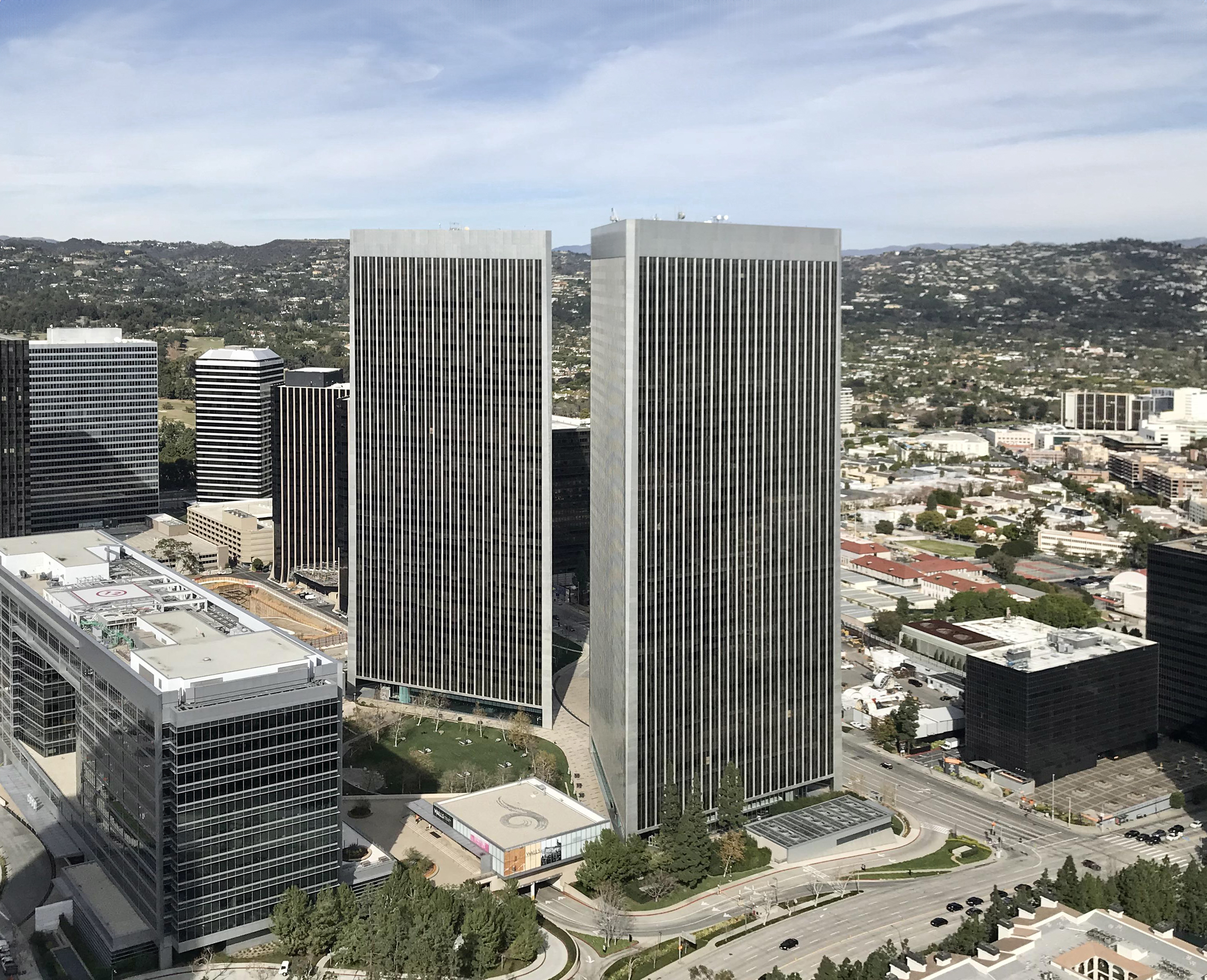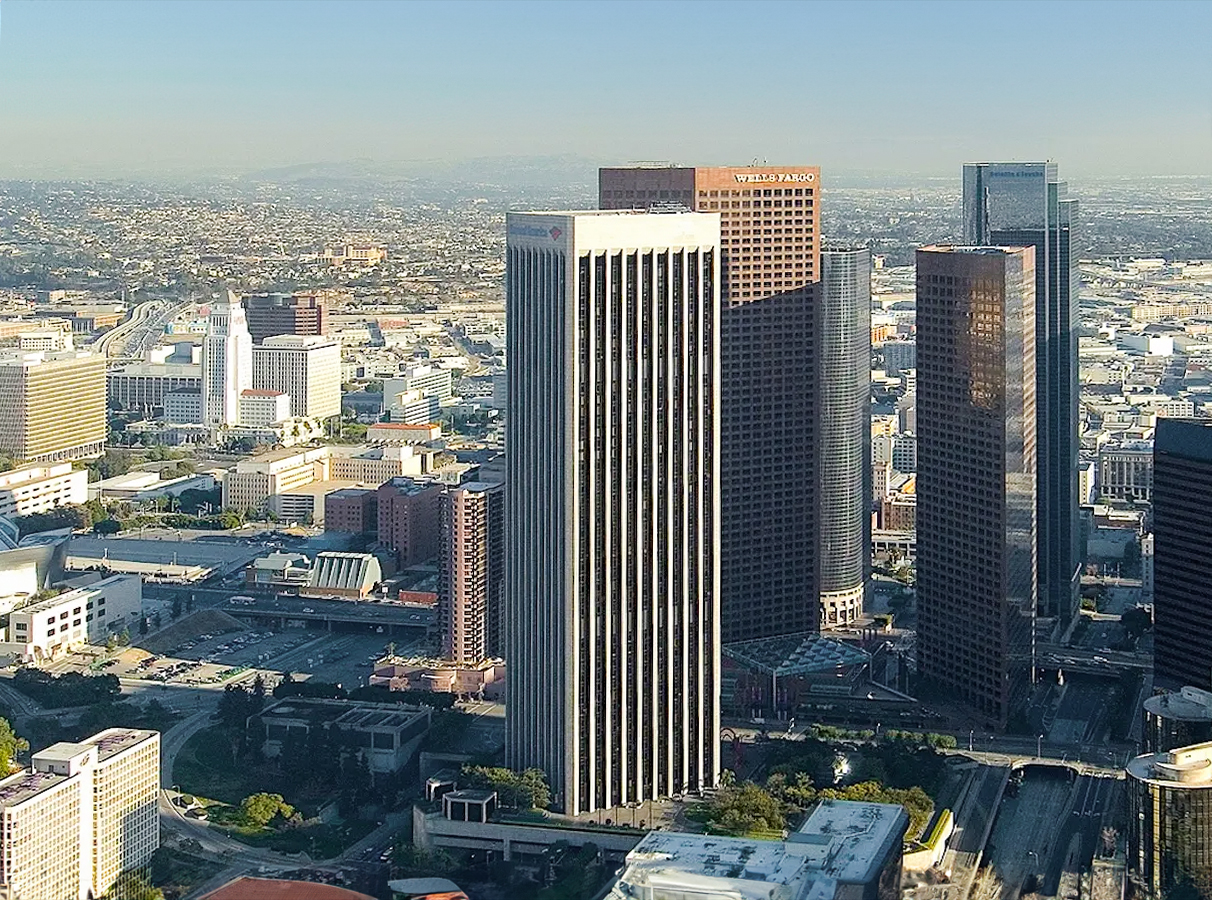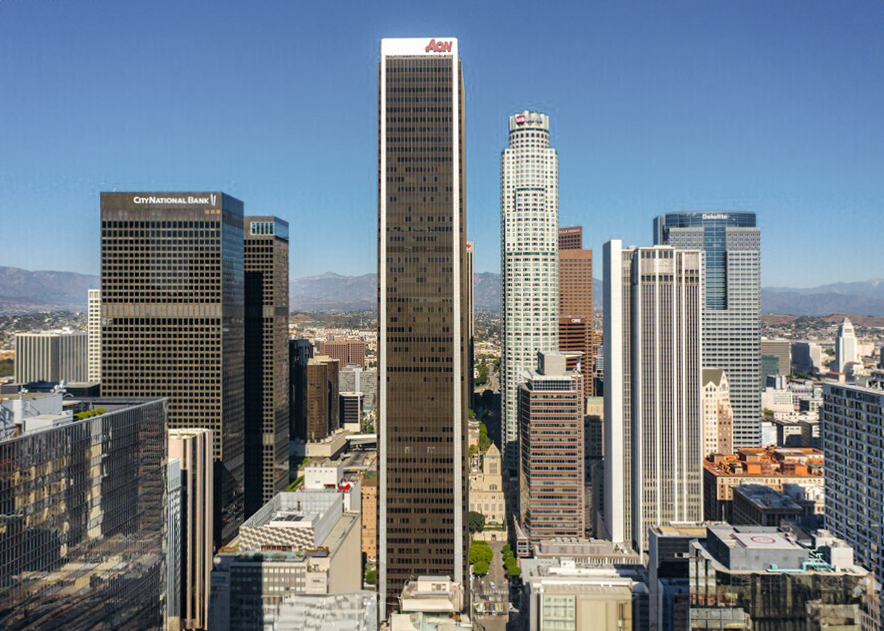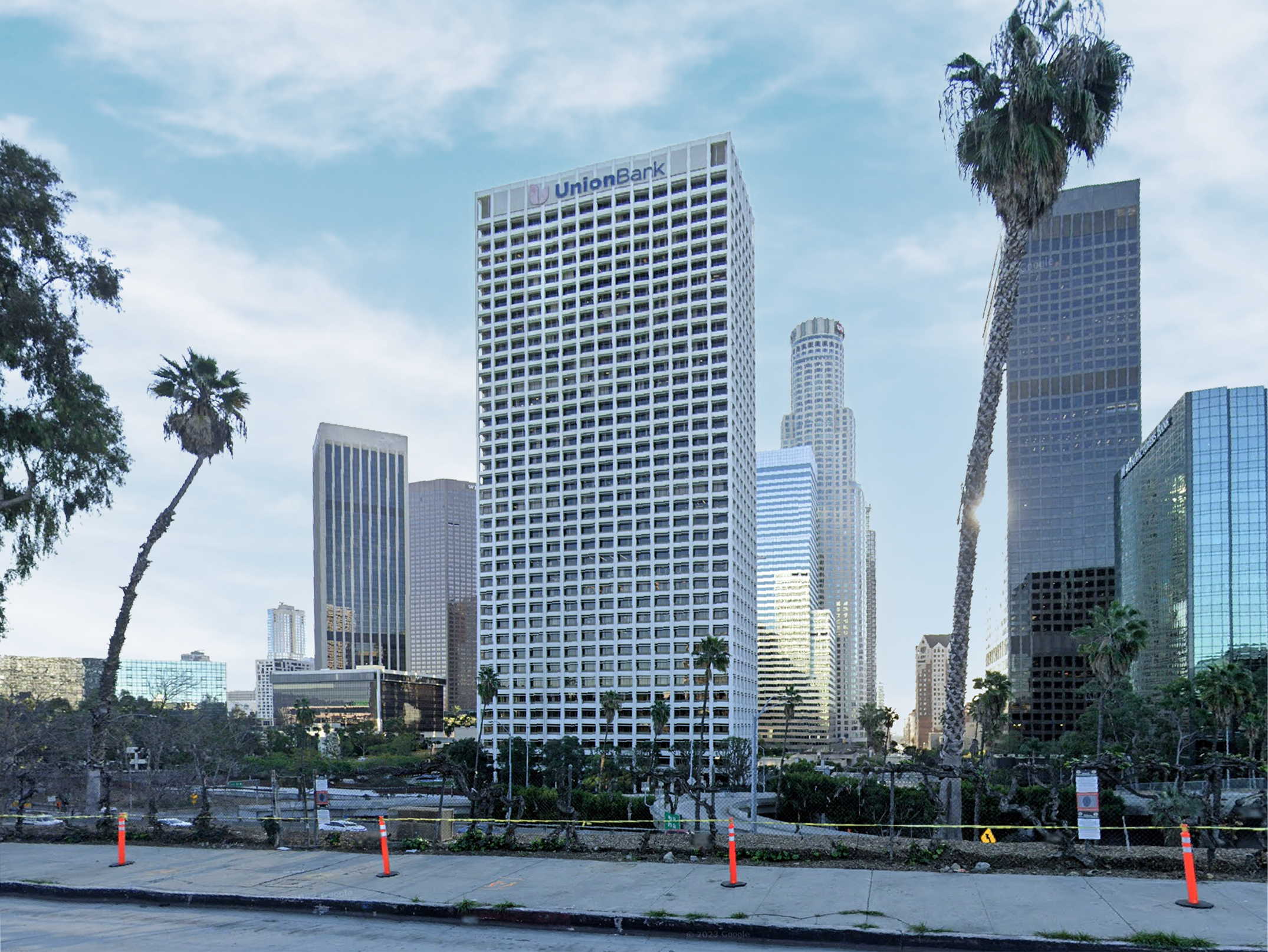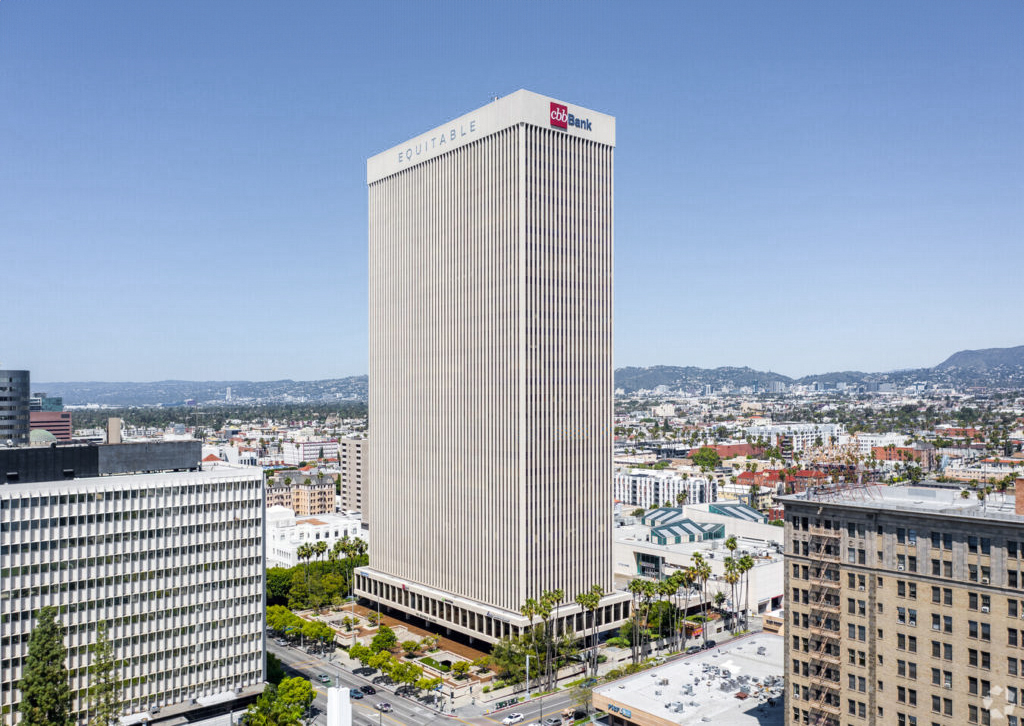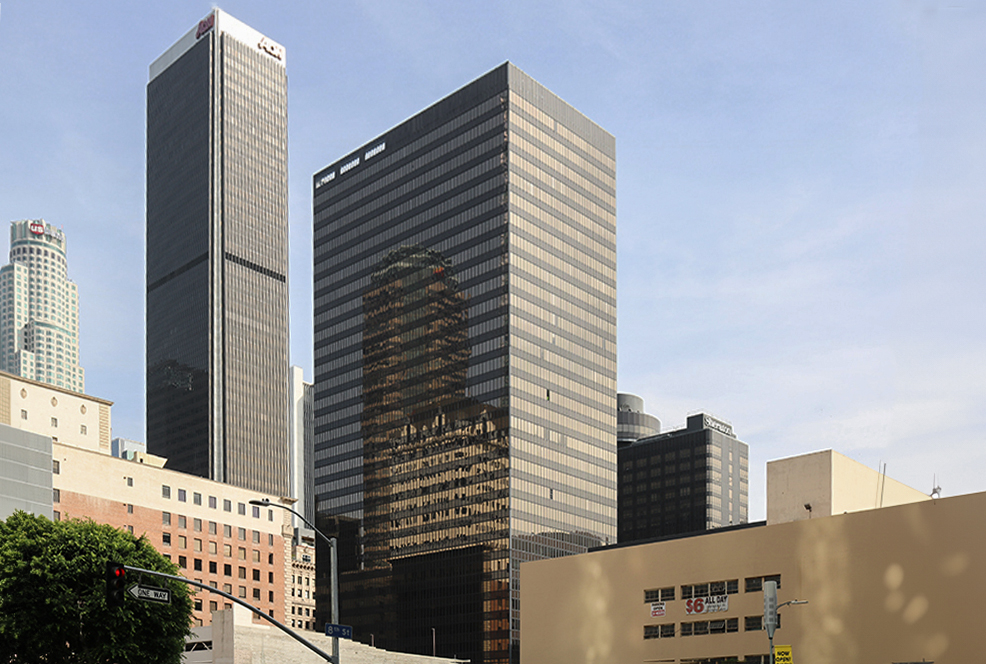The Century Plaza Towers is an International Style skyscraper designed by Minoru Yamasaki & Associates, and built between 1969 and 1975 in Los Angeles, CA.
Its precise street address is 2029 and 2049 Century Park East, Los Angeles, CA. You can also find it on the map here.
These twin tower are minimalist in materials and decoration, reaffirming Yamasaki's concept that buildings, for their greater stability, function, and aesthetic appeal, should use the least possible amount of materials.
The two towers have a triangular floorplan, facing each other through one of their apexes. This shape also extends into the landscaping around the buildings.
The building underwent a major restoration in 2008. The architect commissioned to undertake this restoration was Keating Khang Architects.
